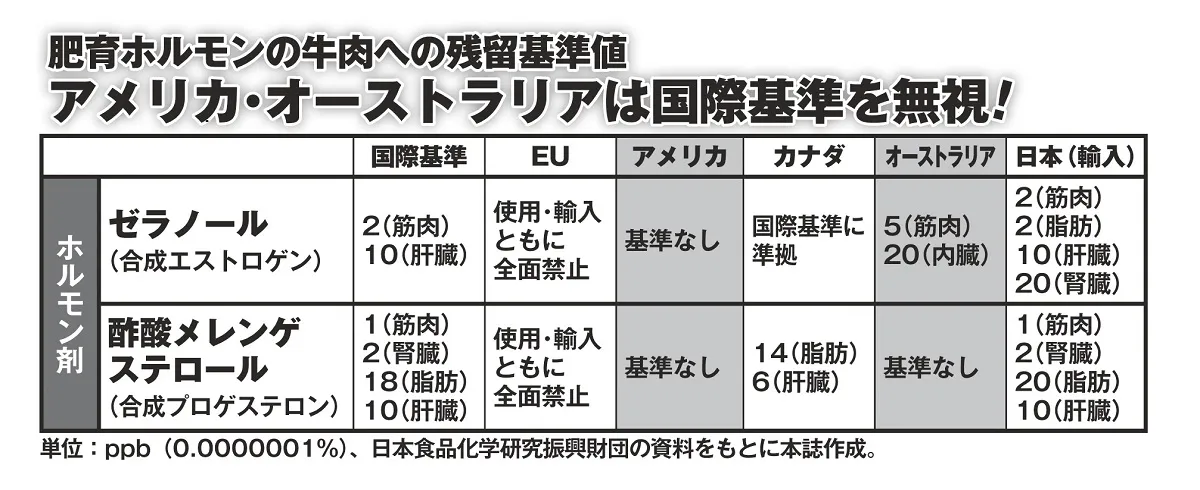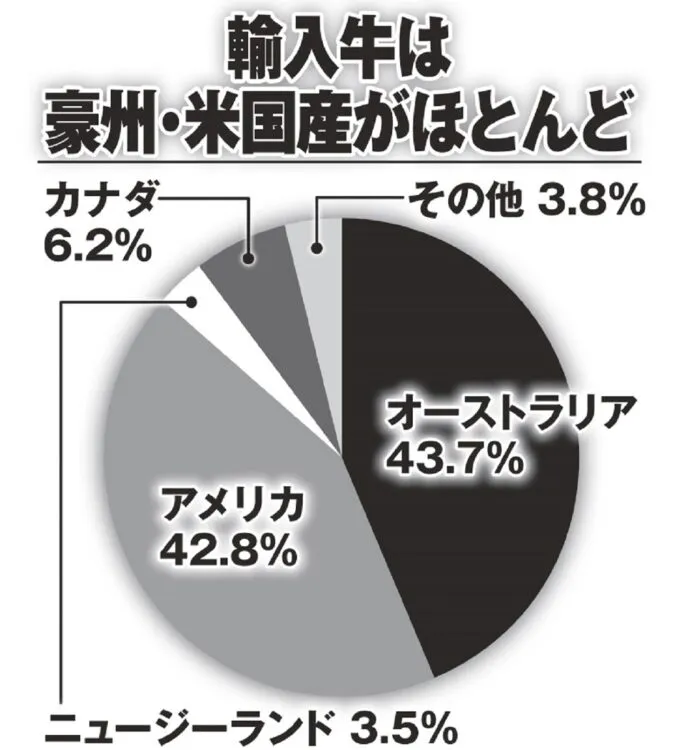

US / Australia: Diethylstilbestrol used Beef: Mass export to Japan
-Exporting beef that uses fattening hormones, which may have adverse effects-
American beef:
Exports to Japan are strong due to the reduction of tariffs in January last year.
Most of this imported beef contains “fat hormone,” which has been pointed out to have an adverse effect on the human body.
Uses synthetic female hormones:
Commentary by Mutsuko Ohnishi, a physician living in Boston after working as a researcher at Harvard University in the United States.
For Japanese imported beef,
In addition to the natural hormones found in the body of cows, artificial synthetic hormones are mixed.
“Especially the danger of synthetic estrogen” is a concern for Japanese imported beef.
Puerto Rico Incident:
From the mid-1970s to the early 1980s, “abnormal growth such as swelling of the breasts of young girls” continued in Puerto Rico and elsewhere.
It was suggested that the cause of this was “the danger of meat with residual synthetic female hormone called diethylstilbestrol (DES)”.
Diethylstilbestrol (DES):
In the United States in 1979 and in the EU in 1981, DES was partially banned.
Total ban in EU:
In 1988, “All fattening hormones are totally banned in the EU”
“Import ban on meat using synthetic female hormones” in 1989
The EU bans the import of American beef.
In just seven years, “the breast cancer mortality rate is 20-45% in many EUs” has decreased.
But still, there are no residual standards in the United States.
In Japan, the principle is not to use hormones:
In Japan, the use of fattening hormones is not permitted.
Globally, WHO has set a guideline for the upper limit of residual standards for meat.
US / Australia, no national standards yet:
However, in the United States, “there is no standard value itself, assuming that fattening hormones are not dangerous.”
America,
Canada,
Australia,
New Zealand, etc.
The above countries have “approved the use of fattening hormones in beef cattle”.
Graduate School of Agricultural and Life Sciences, University of Tokyo: Professor Nobuhiro Suzuki
US / Australia, proper use of hormones:
For the EU
We make beef that does not use hormones.
For Japan
We export mass-produced beef using hormones.
The same is true in the United States.
We distinguish between EU and Japan and use hormones properly.
No Japanese inspection system:
Japan says, “For overseas imported meat, we only have a’remaining upper limit for hormones according to WHO standards’.”
What’s more, “in a situation where there is virtually no inspection, it is in an uncontrolled state.”
Ministry of Agriculture, Forestry and Fisheries of Japan:
After confirming with the Ministry of Agriculture, Forestry and Fisheries, I acknowledged this situation.
In other words, Japan is “a good target for buying” beef with hormones “.”
Money Post WEB
https://www.moneypost.jp/767539
Japan: Urgent import restrictions on US beef
-The amount of imports from the United States will increase sharply in 2020-
Japan-US Trade Agreement:
The standard quantity for FY2008 is 242,000 tons.
Ministry of Finance of Japan:
By February, imports amounted to 233,112 tons.
With the activation of safeguards, the tariff rate will be raised from the current 25.8% to 38.5% for 30 days.
Imports from Australia declined due to the effects of the drought, and demand from the United States increased.
Kyodo news
https://this.kiji.is/744210172895363072
D.E.S is it | Health effects of DES exposure In the early 1970s,
an American study
revealed a increased risk of developing rare types of vaginal and cervical cancers in DES daughters (exposed in utero to diethylstilbestrol).
The United States then sounded the alarm.
In 1971, the United States, but also Canada, recommended to stop prescribing DES to pregnant women.
France was alerted by the United States,
however, DES continued to be prescribed until 1977.
In France, around 200,000 pregnant women received Distilbène® (french brand name of DES),
and 160,000 children, including 80,000 daugthers and 80,000 sons, were born to these pregnancies.
We call them “DES children”.